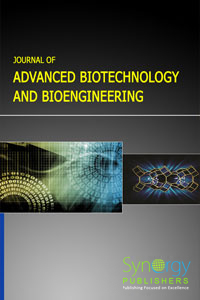
Prevalence of Extended-Spectrum Beta-Lactamase, AmpC Beta-Lactamase, and Metallo-Beta-Lactamase among Clinical Isolates of Pseudomonas aeruginosa Pages 22-29
Rehab Mahmoud Abd El-Baky, Nehal Hussein Abd El-Azeim and Gamal Fadl Mahmoud Gad
Microbiology Department, Faculty of Pharmacy, Minia University, Minia, Egypt
DOI: http://dx.doi.org/10.12970/2311-1755.2013.01.01.3
Download PDFAbstract: Objectives: to study prevalence of ESBLs, AmpC beta‑lactamase and metallo‑beta‑lactamase among clinical isolates of P. aeruginosa.
Materials and Methods: P. aeruginosa were isolated and identified by the traditional microbiological procedure, ESBLs were detected by combined disk diffusion method according CLSI recommendations, AmpC beta-lactamase was detected by iodometric methods, MBL was detected by disc potentiation test and Agar dilution method for antibiotic susceptibility testing.
Results: Out of 330 samples of different types of infections, 58 were positive for P. aeruginosa. All isolates showed high resistance to most of the tested antimicrobials but showed low resistance to amikacin. Forty-two (72.4%) isolates were detected as β-lactamase producers, 16 (27.5%) isolates were positive for ESBLs while 31(53.4%) were MBL producing strains. All ESBL and MBL producers were highly resistant to the tested antimicrobials. Plasmid profile showed that 9 isolates were plasmid mediated.
Conclusion: The study emphasizes a high prevalence of multidrug-resistant P. aeruginosa producing beta‑lactamase enzymes of diverse mechanisms especially in burn units. Proper antibiotic policy and measures should be taken to minimize the emergence of this multiple β‑lactamase producing pathogens and also the danger of their dissemination to other bacteria by plasmids which may carry resistance genes for other antimicrobials.
Keywords: Pseudomonas aeruginosa, AmpC β-lactamase, ESBLs, MBL, plasmid. Read more

